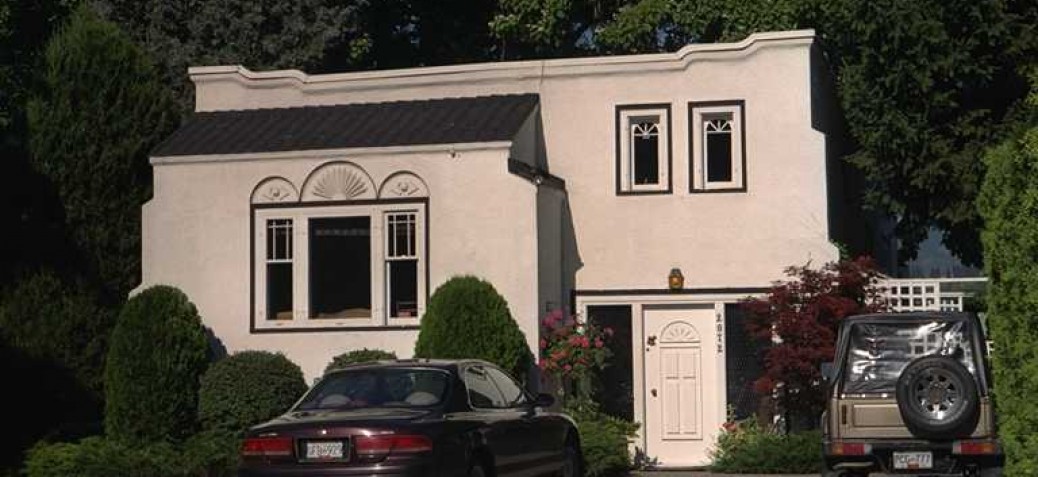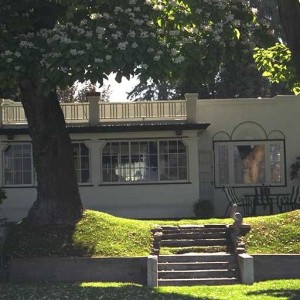McWilliams House
Place Description
The McWilliams House is a stucco-clad, one-storey split-level Spanish Colonial Revival style residence. It is located in Kelowna's historic Abbott Street neighbourhood, close to the city centre. The house is situated on lakefront property, with its principle entrance on Abbott Street. The yard is well maintained and provides an appropriate setting of mature coniferous trees, mature horse chestnut trees, shrubbery and manicured lawns.
Heritage Value
Built in 1931, the McWilliams House is valued as a rare and fine example of Spanish Colonial Revival architecture. The design is associated with Spanish Colonial prototypes seen in the United States between the two World Wars, when period revival styles reached the height of their popularity. Further impetus was given to the use of the Colonial Revival styles during the American Sesquicentennial in 1926, when patriotism was at a fever pitch and architectural fashion favoured the use of traditional, Colonial models. The house is a rarity in the Canadian context, as the Spanish Colonial Revival style was not commonly employed as a residential style in this country. Elements of the style articulated in this house include the asymmetrical facade with horizontal emphasis provided by the flat roof, smooth stucco walls and pale colour palette. Despite the use of traditional detailing, the house also demonstrates an affinity with modernistic trends of the day, expressed mainly in the building's simple geometry and massing.
Additionally, this house is valued for its associations with the prominent McWilliams family. Thomas Finley McWilliams, a well-known local lawyer, occupied the house in the late 1940s and 1950s. After service in the First World War, McWilliams articled in Vernon and took over the law practice of R.B. Kerr in Kelowna in 1921, which he operated until his death in 1966. McWilliams acted as the City Police Magistrate and Stipendiary Magistrate for the area. His wife Muriel, active in community and charitable work, was named Kelowna Citizen of the Year in 1956. McWilliams Road was named for T.F. McWilliams.
Character Defining Elements
Key elements that define the heritage character of the McWilliams House include its:
- location between the lakeshore and Abbott Street, with a main facade facing both frontages;
- residential form, scale and massing as expressed by its one-storey split level massing with partial upper storey and asymmetrical rectangular plan;
- flat roof with decorative stepped parapets;
- concrete foundation and wood-frame construction with smooth stucco-clad exterior;
- Spanish Colonial Revival details including the stucco exterior with step-buttressed corners, pantile roofing over the square front projection facing Abbott Street, exterior chimney with decorative scallop work, rooftop balcony at the lakefront facade, and recessed round blind arches over street and lakefront windows with geometric fan motif relief ornamentation;
- additional exterior features such as side entrance with glazed patio door sheltered by a shed roof porch, enclosed verandah facing the lake and street entrance with large sidelights;
- irregular and asymmetrical fenestration: single, double and triple assembly 2-over-1 and 6-over-1 double-hung wooden-sash windows, with mixed pattern upper sash, and circular side windows; and
- associated landscape features such as a concrete retaining wall with steps, mature trees, shrubs and grassed lawns.





